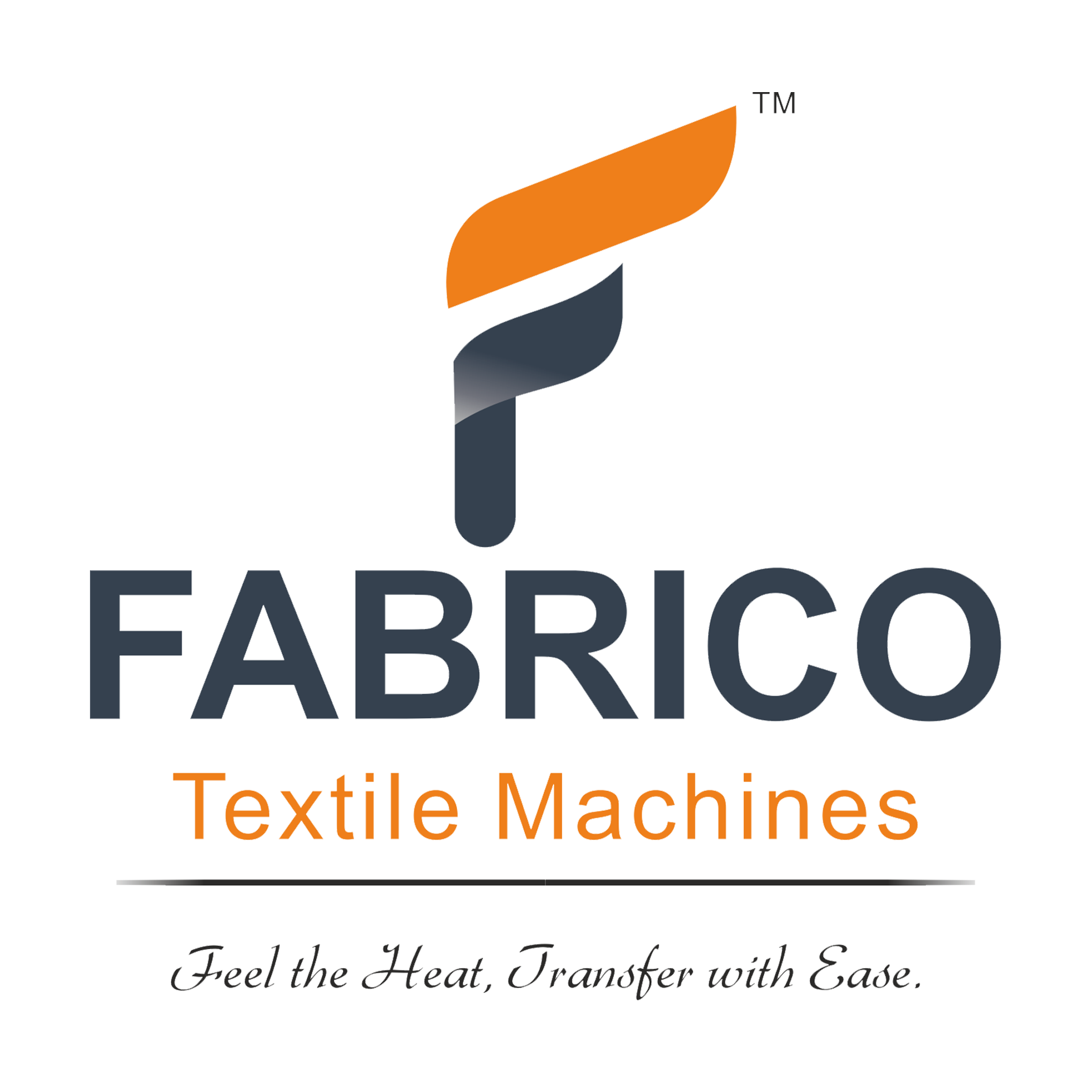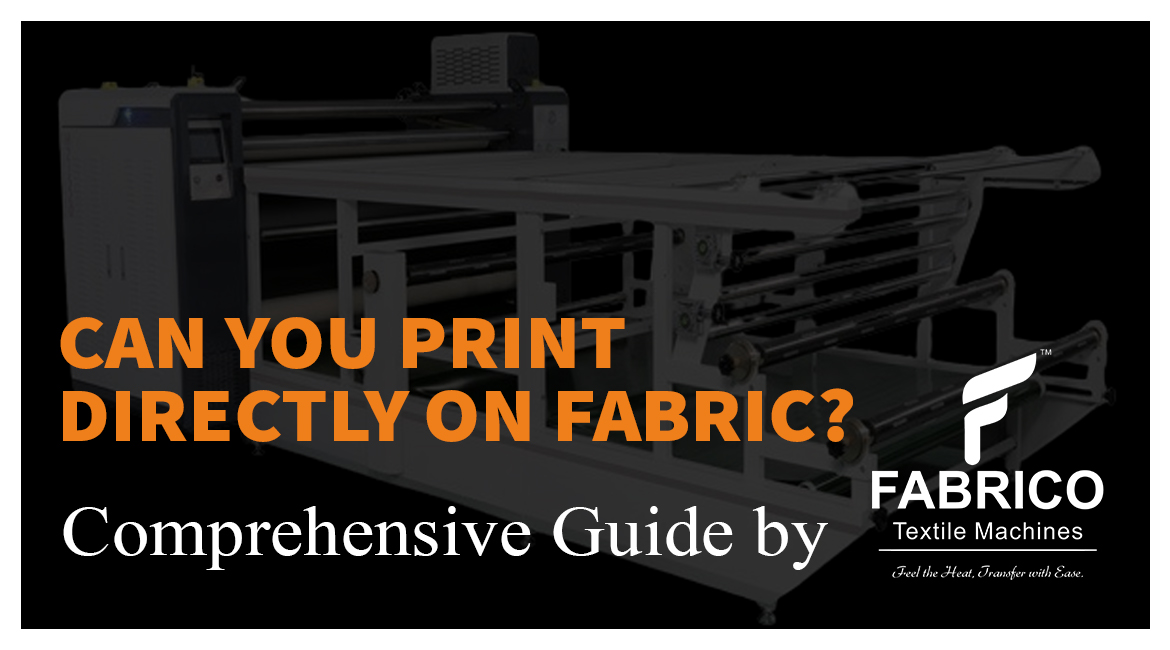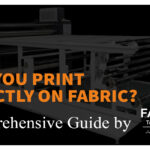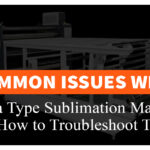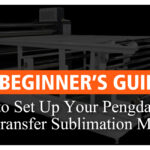A Comprehensive Guide by Fabrico Textile Machines
In today’s fast-evolving textile industry, the demand for innovative and efficient printing methods has skyrocketed. Among these innovations, the question often arises: Can you print directly on fabric? Fabrico Textile Machines, a leading manufacturer in the textile machinery space, provides cutting-edge solutions for digital fabric printing, including the renowned Pengda Indian Heat Transfer Sublimation Machine. In this blog, we’ll explore the intricacies of direct fabric printing and how Fabrico’s advanced machinery is revolutionizing the industry.
What is Direct Fabric Printing?
Direct fabric printing is a cutting-edge process that enables the transfer of designs, patterns, or images directly onto fabric without intermediary substrates or materials. This innovative method is gaining popularity for its efficiency, precision, and ability to produce vibrant, durable prints that cater to modern industry demands.
Unlike traditional methods like screen printing, which require separate screens for each color and involve time-consuming setups, direct fabric printing offers a streamlined, eco-friendly alternative. With advancements in technology, machines like the Pengda Indian Heat Transfer Sublimation Machine from Fabrico Textile Machines make achieving superior results easier and more efficient than ever before.
Traditional Printing vs. Direct Fabric Printing
Traditional Methods
- Screen Printing: Involves creating stencils and using screens to apply ink to fabric. While effective for bulk orders, it’s labor-intensive and not ideal for intricate designs or small batches.
- Block Printing: A manual method using carved wooden blocks to stamp patterns. It’s artistic but time-consuming and less scalable.
Direct Fabric Printing
With machines like the Pengda Indian Heat Transfer Sublimation Machine, the process is simplified:
- Design Creation: Digital designs are created on software.
- Transfer: The design is either directly printed or sublimated onto the fabric.
- Fixation: Heat and pressure are applied to ensure the print adheres permanently to the fabric.
Can the Pengda Machine Print Directly on Fabric?
The answer is both yes and no, depending on the fabric type and printing requirements. The Pengda Indian Heat Transfer Sublimation Machine is specifically designed for heat transfer printing, which indirectly applies designs to the fabric via sublimation paper. Here’s how it works:
The Sublimation Process
- Preparation: The design is printed on specialized sublimation paper using sublimation ink.
- Heat Transfer: The sublimation paper is placed on the fabric, and the Pengda machine applies heat and pressure.
- Chemical Reaction: The heat converts the sublimation ink into gas, which bonds with the fabric’s fibers, creating a vibrant, durable design.
While this is not direct printing in the traditional sense, the results are comparable, offering vibrant colors and excellent durability. This method is ideal for polyester fabrics and polyester-coated surfaces.
Advantages of Using the Pengda Machine
1. High-Quality Prints
The Pengda Indian Heat Transfer Sublimation Machine ensures superior print quality, with vibrant colors and intricate details that are hard to achieve with other methods.
2. Durability
Sublimation printing ensures the design becomes part of the fabric, resulting in prints that won’t crack, peel, or fade over time.
3. Eco-Friendly
This method minimizes waste and uses water-based inks, making it an environmentally friendly choice for businesses.
4. Cost-Effective
With minimal setup time and no need for screens or plates, the Pengda machine is an economical option for both small and large orders.
Applications of Heat Transfer Sublimation
- Custom Apparel: T-shirts, sportswear, and uniforms.
- Home Decor: Curtains, sofa covers, and cushion covers.
- Promotional Items: Tote bags, banners, and tablecloths.
- Artistic Creations: Personalized designs for niche markets.
Limitations of Direct Printing and How Fabrico Overcomes Them
Common Challenges
- Not all fabrics are suitable for direct printing. For example, natural fibers like cotton require pretreatment or different printing methods.
- Direct printing on fabric may require specialized inks and treatments, increasing costs.
Fabrico’s Solution
Fabrico Textile Machines offers a range of machinery tailored to diverse needs. The Pengda Indian Heat Transfer Sublimation Machine excels in producing top-notch prints on polyester and blended fabrics. For other fabric types, Fabrico provides additional machinery and expertise to guide clients toward the best solutions.
Fabrico: Your Partner in Textile Innovation
At Fabrico Textile Machines, we understand that every business has unique requirements. Our Pengda Indian Heat Transfer Sublimation Machine is just one example of how we cater to the diverse needs of the textile industry. Here’s why customers trust us:
1. Innovation-Driven
We stay ahead of trends, ensuring our machinery incorporates the latest advancements in textile printing technology.
2. Quality Assurance
All our machines undergo rigorous testing to deliver consistent, high-quality results.
3. Customer Support
Our team of experts is always available to provide technical support, training, and guidance.
4. Sustainability Commitment
We prioritize eco-friendly solutions, helping businesses reduce their environmental footprint.
So, can you print directly on fabric? The answer depends on your definition of “direct.” With the Pengda Indian Heat Transfer Sublimation Machine by Fabrico Textile Machines, you can achieve stunning, high-quality prints that rival direct printing methods. Whether you’re producing custom apparel, home decor, or promotional items, our technology ensures precision, efficiency, and durability.
Ready to elevate your textile printing game? Contact Fabrico Textile Machines today and discover how our innovative solutions can transform your business.
